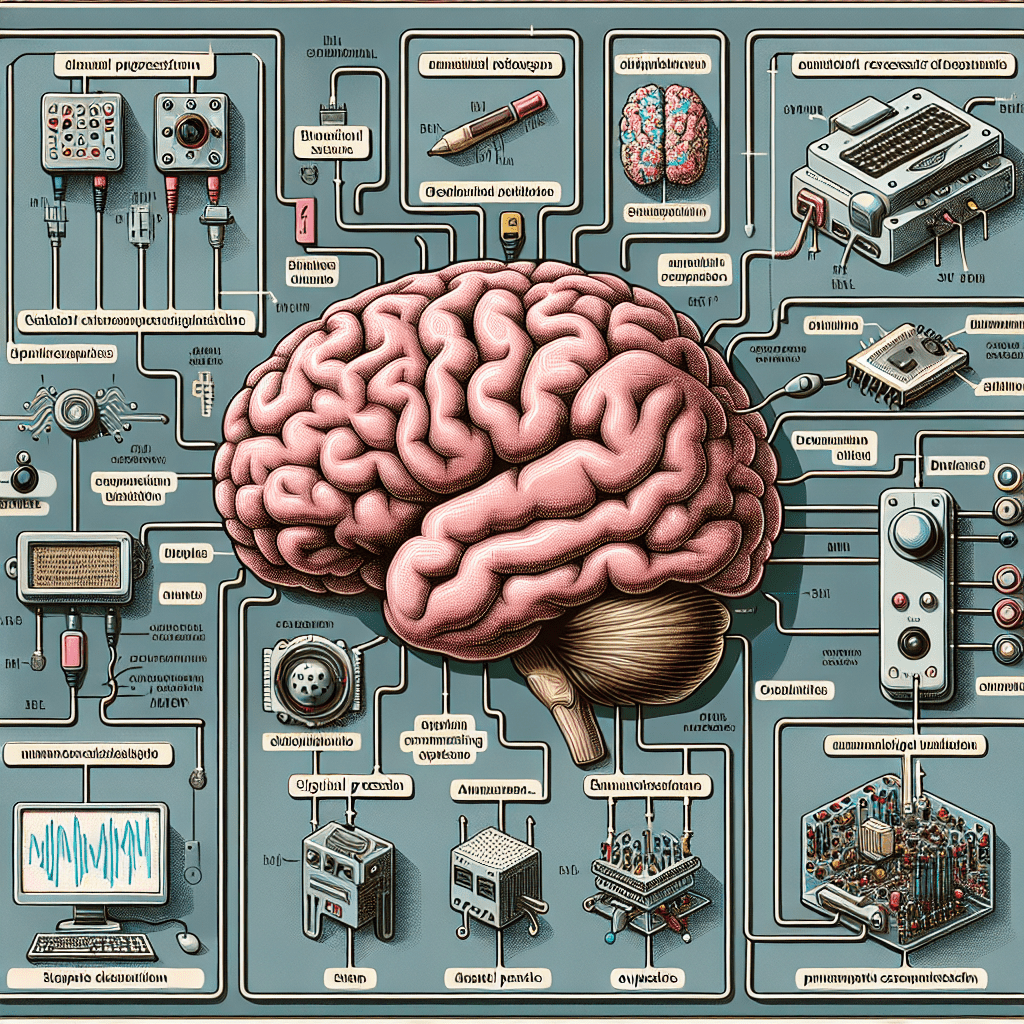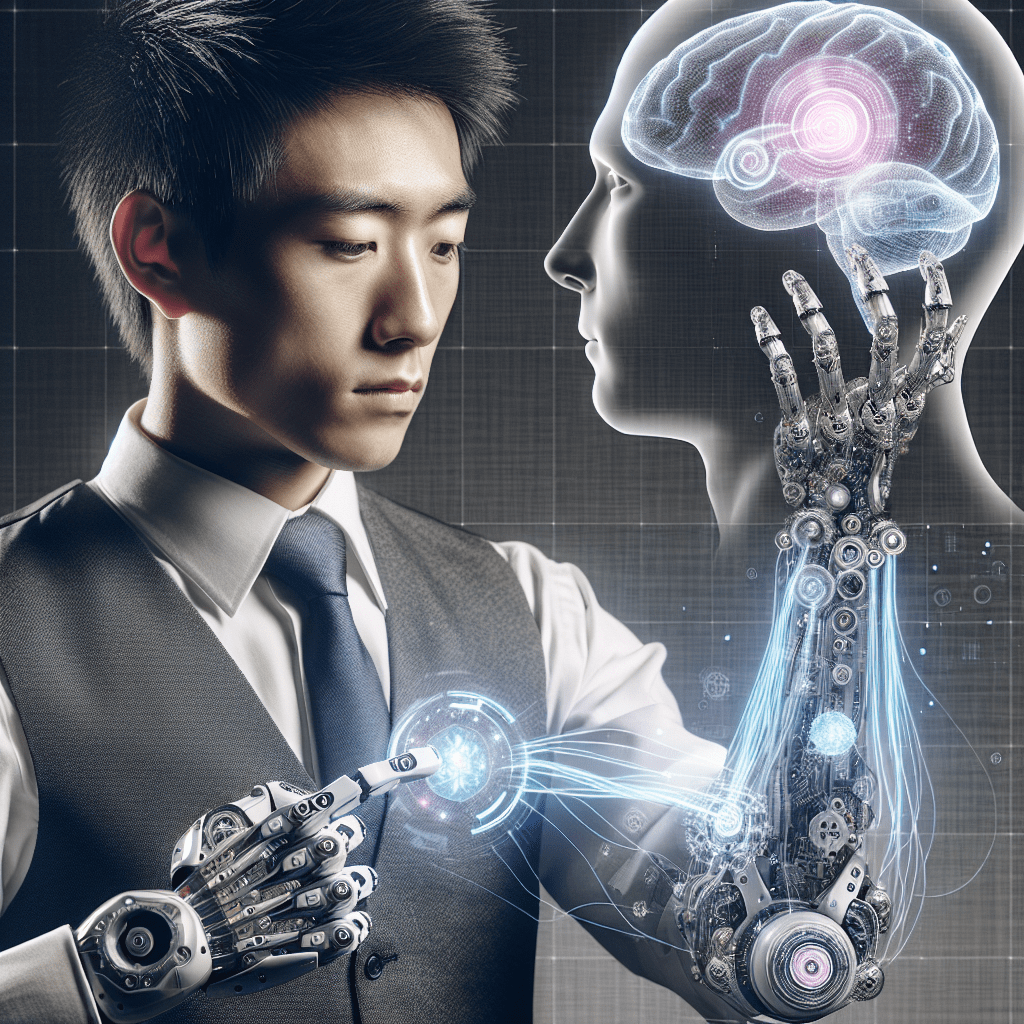Ready to explore **The Rise of Brain-Computer Interfaces: Merging Minds with Machines**? Stick around as I unpack the essentials simply.
Table of Contents
In the ever-evolving landscape of technology, one of the most exciting advancements is the development of brain-computer interfaces (Bris). These sophisticated systems promise to revolutionize how we interact with technology, offering new opportunities for enhancing human capabilities. If you’ve ever wondered about merging your mind with machines, you’re in the right place. Here, we’ll explore how brain-computer interfaces work, their potential benefits, risks, and their profound impact on society, especially for people with disabilities. The concept of Bris is not merely about technological innovation; it’s about pushing the boundaries of human experience and capability in fundamental ways.
Understanding Brain-Computer Interfaces
At its core, a brain-computer interface is a system that enables direct communication between a human brain and an external device. Typically, Bris detect brain signals, interpret them via algorithms, and translate them into commands that operate a device. It’s a blend of neuroscience, computer science, and engineering magic. This convergence of disciplines is what allows Bris to read and interpret the complex language of neural activity and turn it into actionable input for machines.
In my experience, the key takeaway here is the potential for Bris to bypass traditional physical interaction methods like keyboards and mice, offering new ways for users to engage with technology. This could mean controlling devices through thought alone—imagine changing channels on your TV or sending texts just by thinking about it. This leap from physical interaction to mental commands could redefine user interface design across multiple industries.

How Brain-Computer Interfaces Work
The operation of Bris involves several intricate steps:
- Signal Acquisition: Sensors collect electrical signals from the brain. These sensors, often in the form of electrodes, can be non-invasive like those found in EEG headsets, or invasive, requiring surgical implants that provide more direct access to brain activity.
- Data Interpretation: Algorithms analyze the signals to determine the user’s intention. This process involves sophisticated machine learning models that must be trained to recognize patterns in brain signals and translate them into specific commands.
- Execution: The system executes the command on an external device. This could be as simple as moving a cursor or as complex as instructing a robotic arm to perform tasks based on the thoughts of the user.
A common pitfall I’ve seen is underestimating the complexity of accurately interpreting brain signals. This is crucial for the reliable function of Bris. Misinterpretations can lead to incorrect or unintended actions, which highlights the need for ongoing improvements in algorithm development and training.
Neuralink and Beyond: Real-World Examples of Bris
Neuralink, founded by Elon Musk, is perhaps the most well-known venture into Bris. It aims to develop ultra-high bandwidth brain-machine interfaces to connect humans and computers. Another notable example is the Brain Gate system, which has enabled paralyzed individuals to control robotic limbs or computer cursors directly with their thoughts. These examples underscore the significant strides being made in the field and hint at the potential widespread application of Bris in medical and consumer technology.
The Future of Human-Computer Interaction
The implications of Bris on future human-computer interaction are vast:
- Enhanced communication for individuals with severe physical disabilities. Bris could provide a voice for those who are unable to speak or use traditional communication devices, fundamentally changing their interaction with the world around them.
- Potential development of new learning interfaces that could accelerate education. Imagine students being able to interact with educational content through thought, making learning more intuitive and tailored to individual cognitive patterns.
- Revolutionary changes in the gaming and entertainment industries. Bris could lead to a new era of gaming where players control the game environment directly with their minds, creating more immersive and interactive experiences.
Impact of Bris on Disabilities
Bris hold transformative potential for people with disabilities. They offer avenues for communication and control that were previously unimaginable for those with severe physical limitations. Devices that translate neural activity into digital commands can allow users to control wheelchairs, computers, or prosthetic devices with their minds. This not only enhances independence but also improves quality of life by providing new modes of interaction with their environment.

Ethical Considerations of Bris
As with any advancing technology, Bris come with their set of ethical challenges:
- Privacy concerns related to the accessibility of neural data. The intimate nature of the data collected from Bris—literally thoughts and intentions—raises significant privacy issues that must be addressed to prevent misuse.
- Issues of autonomy and consent, especially in vulnerable populations. It’s essential to ensure that all users fully understand what it means to use a BCI and that they are capable of consenting to its use.
- The potential for socio-economic divides as the technology develops. Access to BCI technology could become another facet of digital divide, providing enhanced capabilities to some while excluding others.
A common pitfall I’ve seen in the industry is the oversight of these ethical considerations in the rush to innovate. It’s crucial that development is paired with robust ethical frameworks to guide the responsible deployment of Bris.

“`
Finally, there are concerns about data security and privacy. Because Bris deal with very personal data—brainwaves—ensuring that this information is protected is crucial. Developing secure systems and transparent policies will be important to gaining public trust.
Another challenge is the technical complexity of Bris. Users often require significant training, which can be a barrier for many, especially older adults or those in rural areas where such training may not be available. Simplifying these technologies and offering more widespread training options could help overcome this barrier.
While Bris offer incredible benefits, their widespread adoption faces several hurdles. First, the cost of BCI technologies can be high, making them inaccessible to many who might benefit most. Efforts need to be made to reduce costs and increase availability.
Challenges in BCI Adoption

For many potential users, especially those with disabilities, easy-to-understand manuals and user-friendly training can make a big difference. These resources should be accessible, using simple language and clear instructions.
Educational resources also play a vital role. They can provide essential knowledge about how Bris work, their potential risks, and how to maintain them. For schools and universities, introducing courses on Bris could prepare students for careers in this exciting field. This education could include not only the use but also ethical and practical training about designing and improving Bris.
Learning to use a brain-computer interface is a unique challenge. Users must understand both the technology and how to interact with it using their brain waves. Training programs are crucial for effective BCI use, especially in medical or therapeutic settings. These programs help users practice how to send clear, consistent signals to the BCI, improving the system’s accuracy.
Training and Education for BCI Users

Bris could also work with technologies like the Internet of Things (IoT). This could lead to smart cities where public systems, like traffic lights and water systems, respond directly to human thought patterns. This could make city living more efficient and responsive to its residents’ needs.
Also, Bris can be linked with artificial intelligence (AI). AI can learn and adapt based on the information received from a BCI. This could help in making devices smarter, making everyday tasks easier for people with disabilities. Imagine a smart home that adjusts lighting, temperature, and music based on what you think!
Brain-computer interfaces (Bris) are not just stand-alone systems. They can work together with other technologies to create even more powerful tools. For instance, combining Bris with virtual reality (VR) can help in creating more immersive training environments for doctors or pilots. This means people can learn complex skills in a safe, controlled space.
Conclusion
The rise of brain-computer interfaces is not just a technological evolution—it’s a redefinition of human potential. As we continue to explore the boundaries of what’s possible, the integration of minds and machines through Bris presents both extraordinary opportunities and significant challenges. For those curious about this field, the journey is just beginning, and the possibilities are as vast as our imagination.
If you’re fascinated by the potential of Bris and want to stay on the cutting edge of this technology, keep exploring, keep questioning, and, most importantly, stay informed about the latest developments.
And that’s a wrap on **The Rise of Brain-Computer Interfaces: Merging Minds with Machines**! Hope this was helpful. Questions or tips? Share them below!
“`

Very nice blog post. I definitely appreciate this website.
Keep writing!
Thank you for the kind words! I’m thrilled you enjoyed the blog post and appreciate your support. I’ll definitely keep the AI-powered content coming—stay tuned for more!